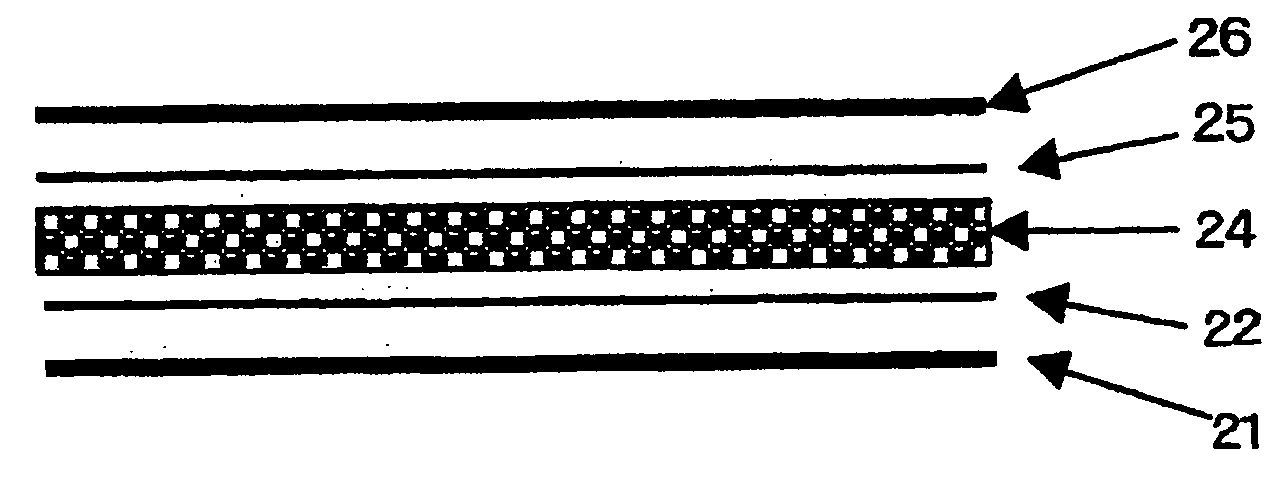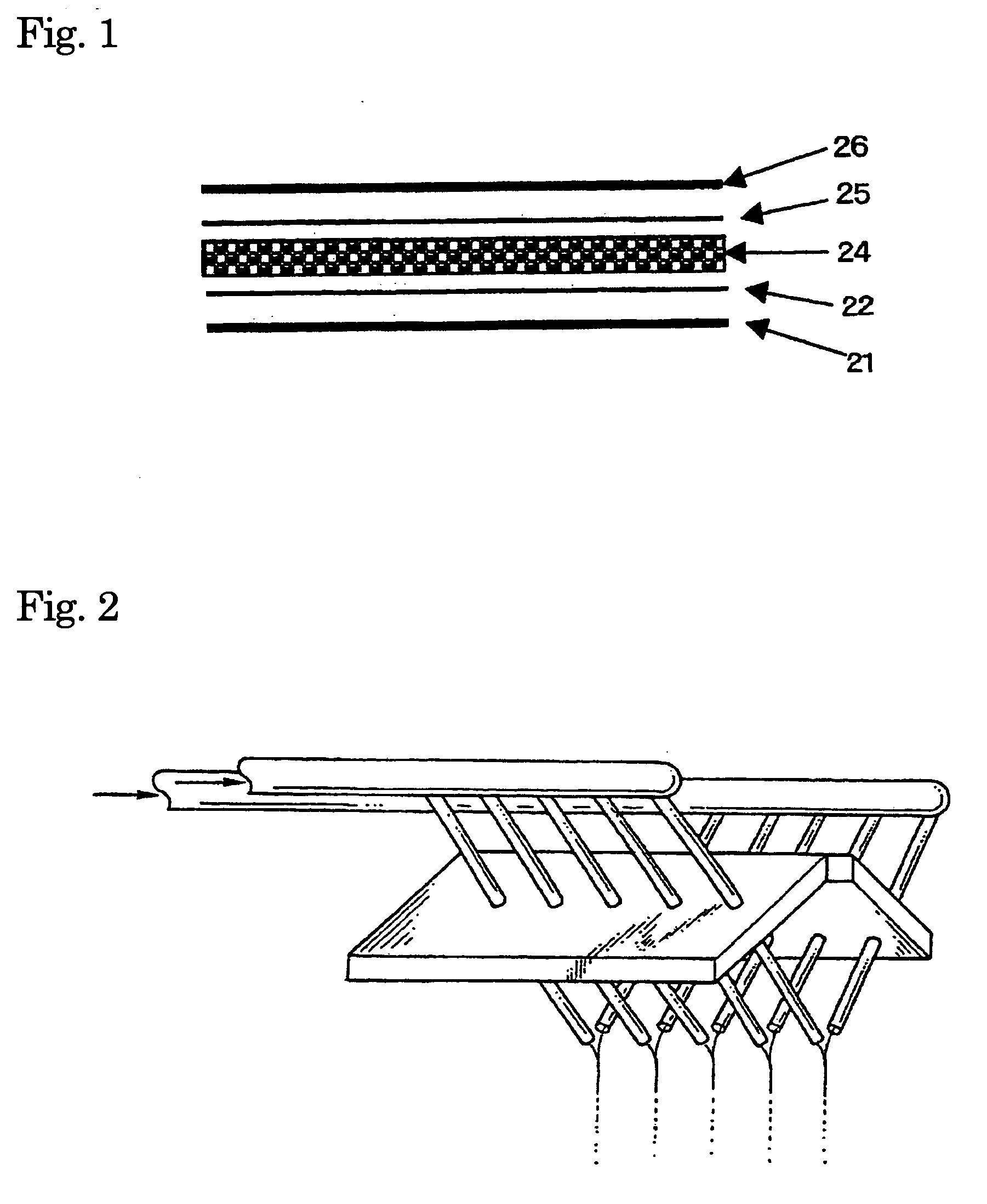Water-absorbent article and method for producing the same
a technology of water-absorption resin and water-absorption gel, which is applied in the direction of bandages, weaving, other chemical processes, etc., can solve the problems of water-absorption gel after water absorption being never fixed stably, water-absorption resins dispersed by such a method on the base materials, and leakage of body fluids
- Summary
- Abstract
- Description
- Claims
- Application Information
AI Technical Summary
Problems solved by technology
Method used
Image
Examples
production example 1
Production of Water-Absorbent Resin Composite
[0161] 3.3 parts by weight of water were added to 100 parts by weight of acrylic acid, to which 133.3 parts by weight of an aqueous 25 wt % solution of sodium hydroxide were added under cooling at 25° C. or lower to prepare an aqueous partially neutralized acrylic acid solution with a monomer concentration of 50 wt % and a degree of-neutralization of 60 mol %.
[0162] Then a solution A was prepared by adding 0.14 part by weight of N,N′-methylene-bisacrylamide as a crosslinking agent, and 4.55 parts by weight of an aqueous 31 wt % hydrogen peroxide solution as an oxidizing agent, to 100 parts by weight of the aqueous partially neutralized acrylic acid solution.
[0163] Separately, a solution B was prepared by adding 0.14 part by weight of N,N′-methylene-bisacrylamide as a crosslinking agent, and 0.57 part by weight of L-ascorbic acid as a reducing agent, to 100 parts by weight of the same aqueous partially neutralized acrylic acid solution...
production examples 2 to 6
AND PRODUCTION EXAMPLES 13
Production of Water-Absorbent Rein Composites
[0168] Products comprising water-absorbent resin composites were produced in the same manner as in Example 1, except for the modification of the fiber material, the average fiber length and the average fiber size as shown in Table 1.
[0169] In Production Example 5, polyethylene terephthalate (PET) fiber with a fiber diameter of 1.7 dtex, a length of 0.9 mm and a contact angle with water being 80° was used. In Production Example 6, a fiber mixture of a nylon type with a fiber diameter of 1.7 dtex, a fiber length of 0.9 mm anda contact angle with water being 50° and a rayon type with the same fiber diameter and length but with a contact angle with water being of 0° at a ratio of 1:1 was used. In Production Example 13, a fiber mixture of a polypropylene type (PP) with a fiber diameter of 1.5 dtex, a fiber length of 2.5 mm and a contact angle with water being 90° and a polyethylene type (PE) with the same fiber dia...
production example 7
Production of Water-Absorbent Resin Composite
[0171] According to an Example of JP-A-63-63723, a water-absorbent resin composite was produced by the following procedures.
[0172] In a 200-ml beaker, 45.0 g of acrylic acid and 1.5 g of distilled water were placed. The mixture was neutralized with 60.0 g of an aqueous 25% sodium hydroxide solution under cooling at 35° C. or lower, to prepare an aqueous partially neutralized acrylic acid solution (at a monomer concentration of 50 wt % and a neutralization degree of 60 mol %). 41.9 mg of N,N′-methylene-bisacrylamide and 0.31 g of L-ascorbic acid were dissolved in the aqueous partially neutralized acrylic acid solution, to obtain an aqueous mix monomer solution.
[0173] The upper face of a 300-ml stainless-steel beaker was completely sealed with a polyester sheet. Then, the upper sheet was punctured. A rubber tube was inserted into the resulting hole, to substitute sufficiently the inside atmosphere of the beaker with nitrogen. The aqueou...
PUM
| Property | Measurement | Unit |
|---|---|---|
| humidity | aaaaa | aaaaa |
| temperature | aaaaa | aaaaa |
| particle size | aaaaa | aaaaa |
Abstract
Description
Claims
Application Information
 Login to View More
Login to View More - R&D
- Intellectual Property
- Life Sciences
- Materials
- Tech Scout
- Unparalleled Data Quality
- Higher Quality Content
- 60% Fewer Hallucinations
Browse by: Latest US Patents, China's latest patents, Technical Efficacy Thesaurus, Application Domain, Technology Topic, Popular Technical Reports.
© 2025 PatSnap. All rights reserved.Legal|Privacy policy|Modern Slavery Act Transparency Statement|Sitemap|About US| Contact US: help@patsnap.com



